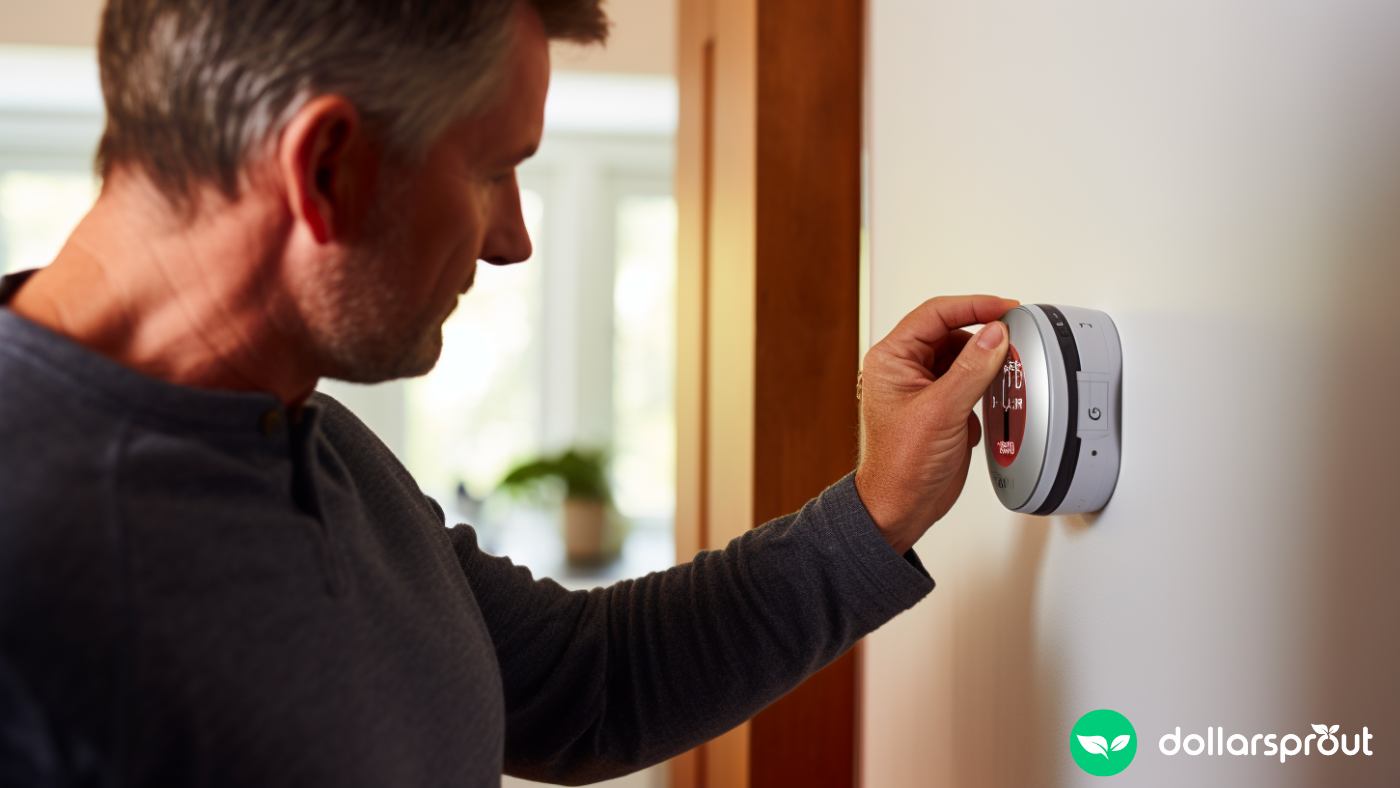10 Easy Ways to Save Electricity (and Reduce Your Bill)
Our readers always come first
The content on DollarSprout includes links to our advertising partners. When you read our content and click on one of our partners’ links, and then decide to complete an offer — whether it’s downloading an app, opening an account, or some other action — we may earn a commission from that advertiser, at no extra cost to you.
Our ultimate goal is to educate and inform, not lure you into signing up for certain offers. Compensation from our partners may impact what products we cover and where they appear on the site, but does not have any impact on the objectivity of our reviews or advice.
Most of these ways to save electricity are absolutely free and you can get started right now. Changing your energy-consuming habits today could save you money on your electricity bill tomorrow (and every month after that).

Our mission at DollarSprout is to help readers improve their financial lives, and we regularly partner with companies that share that same vision. If a purchase or signup is made through one of our Partners’ links, we may receive compensation for the referral. Learn more here.
You don’t need 100 ways to save electricity in order to see a major difference on your next energy bill.
You just need information on our 10 proven ways to save electricity at home to get started.
It’s summer, the time of year for backyard grilling, lounging poolside, and…skyrocketing electric bills.
That last element isn’t something most people look forward to. But with these 10 ways to save electricity at home, you can rest assured you’re doing everything you can to protect the environment — and your wallet.
How to Save Money on Electricity for Free
Most of these ways to save electricity are absolutely free and you can get started right now. Changing your energy-consuming habits today could save you money on your electricity bill tomorrow.
1. Learn to set the air conditioning properly
Air conditioning is the cold elephant in the room when it comes to electric bills. Nothing beats walking into a cold wall of A/C after spending time outside during the summer.
While air conditioning keeps your house bearable in the summer, it’s by far the biggest drain on your wallet. Rethinking the way you use air conditioning can mean significant savings for you.
Start out with basic annual maintenance. This includes checking your air conditioning ducts before the weather heats up, changing the filters, and making sure the vents are actually open.
For the best results, you should change your air conditioner filter monthly.
On hot days, keep your house cool and your power bills lower by using the energy-saving option on your air conditioner, and leave it on when you’re not at home.
Turning the air conditioner on “high” once you walk in the door at night will actually raise your utility bills since the unit has to use much more energy to cool down a hot room.
You can save up to 10% a year on heating and cooling by simply turning back your thermostat 7°-10°F for 8 hours a day from its normal setting.
This is where programmable thermostats come in.
A programmable thermostat can save you tons of money over the long run (as in, thousands of dollars). If you don’t have one, consider making the investment. It’s also one of the easiest ways to save electricity because of the whole set-it-and-forget-it approach.
For instance, you can program your thermostat to stay at X degrees when no one is home but then bring your home back to your desired temperature (slowly) about an hour before you get home. That way, you don’t have to keep your house cool for the entire day when the house is empty.
That adds up to a lot of saved money.
In cold weather, you’ll save money by taking the same approach with your heat.
2. Unplug devices you’re not using
All those smaller appliances and devices in your home don’t use much energy individually, but collectively they can really add up.
Did you know that anything you leave plugged in, like a toaster, coffee pot, etc. (even if they are turned off), continues to draw trace amounts of electricity from your outlets?
In fact, it’s estimated that this “vampire energy” could account for as much as 5% of residential energy use.[1]
Basically, if it’s plugged in, it is costing you small amounts of money that add up over time. But, there’s a workaround for this problem: power strips.
Instead of manually plugging and unplugging everything in your house each day, if you connect your items to a power strip and then simply turn that strip off when you aren’t using something, your items will not drain energy.
Some devices do use a fairly large amount of power, including computers. When you’re not using your computer, shut it off rather than let it “sleep.”
3. Shut curtains and close doors
It’s not rocket science…yet so many times people forget even the most basic ways to reduce summer cooling costs. Of all the ways to save electricity at home or at school, this is by far the easiest (and it’s free).
Keeping your curtains closed during the day keeps sunlight from heating up your home, reducing incoming heat by as much as 30%.
That’s additional heat for which your air conditioner doesn’t have to compensate!
Consider installing awnings on your south and west-facing windows to further reduce the amount of heat coming into your house.
Heat rises- it’s a simple fact of physics. If you have a two-story home, save on air conditioning costs by closing doors on the upper floors when you and the family are primarily downstairs.
Open the doors a half hour or so before bedtime.
Even if you have central air conditioning, consider installing window units in the bedrooms and using them at night instead of keeping the whole house cool. Since morning is the coolest part of the day, your house will probably feel comfortable when you wake up.
How to Save on Utility Bills in the Winter
In some areas, winter can potentially double your energy bill overnight. But thankfully these ideas can help you lower your utility bills in the winter to help compensate for the difference.
4. Inspect your insulation
No one cares more about your home than you do – including the person who built it. If said person did a shoddy job of insulating your attic you could be throwing away hundreds of dollars each and every year.
Energy.gov estimates that nearly 20% of your winter electric bill is made up of heat loss through your attic.[2]
Fortunately, fiberglass insulation is relatively inexpensive and is sure to save you money in the long run.
Tip: There are a ton of DIY tutorials on Google on insulating your own home with fiberglass insulation. Turn a Mike Rowe-esque type job into one of the more fun ways to save electricity with the whole family.
5. Install/replace weather stripping
Laziness is your wallet’s worst enemy. Odds are if I came and inspected your home right now, I’d find about 3 doorways with damaged or completely missing weather stripping; never mind the dozens of windows you have lining your home.
Do me a favor. Watch this neat video and then go and replace your weatherstripping immediately.
6. Consolidate your freezers
Have a freezer you’re only using for hunting season, or for just drinks? If it’s not full to the brim, consider consolidating things and unplugging it completely.
A second freezer in your home is putting up to a 400-watt drain on your total energy consumption. It’s also about $100.00 you’re throwing away annually if you’re barely using it.
More Energy Saving Ideas
If the above ways to save electricity don’t make a big enough dent in your electric bill, consider even more energy-saving ideas below.
7. Reduce large appliance energy waste
Even if your washer, dryer, and dishwasher are energy efficient, they account for other substantial portions of your electric bill. Fortunately, there are energy-saving tips you can use year-round to reduce these costs.
Start by living by these two basic rules (you’d be surprised how many people don’t follow these):
1. Only run full loads so that you run them less often.
2. Run your large appliances during off-peak hours– usually after 8 p.m. – when electric rates are lower.
Here are the best ways to save money with each appliance:
- Washing machine – Do your laundry in cold water. Not only can you mix darker and lighter shades, but you save energy by avoiding the heating element. Your clothes still come out perfectly clean.
- Dryer – This one is tougher, although you can opt for lower settings. The best way to save energy on clothes drying is to let the sun do it. Nothing beats the fresh scent of sun-dried laundry. Not everyone is able to do this – some towns have ordinances against laundry lines – and not everyone wants to, but think about giving it a try in warm weather.
- Dishwasher – Your utensils, pots and pans, and dishes really don’t need to go through the heated dry cycle. If you don’t feel like drying them off the old-fashioned way with a dish towel, just leave the dishwasher door open and let the air take care of drying.
8. Turn off unnecessary lights
How many times did your mom yell at you growing up to turn off all the lights before you left the house?
About 4 billion times – and with good reason. According to bchydro, turning off just 2 100-watt light bulbs in your home for 2 hours a day can save you about $12 per year.[3]
Now just think about how many light bulbs you have in your house.
Now think about how much money you’re throwing away each and every year.
Stop that.
9. Take cold(er) showers
Water is expensive to heat. Really expensive. If you’re looking for ways to save electricity, start by knocking off a couple of minutes off your shower each day.
Besides the obvious benefit of using less water, you also save on electricity (hint: the water doesn’t just get hot on its own).
10. Ditch the oven
Ditching your oven is probably not one you thought of but an easy way to save on electricity nonetheless.
Using lower-wattage devices like toaster ovens, microwaves, and crock pots can save you big bucks. A microwave is nearly 4 times as energy-efficient as an oven. If you’re reheating food or cooking it for the first time, sacrificing a little “taste” is at least going to save you a little money.









